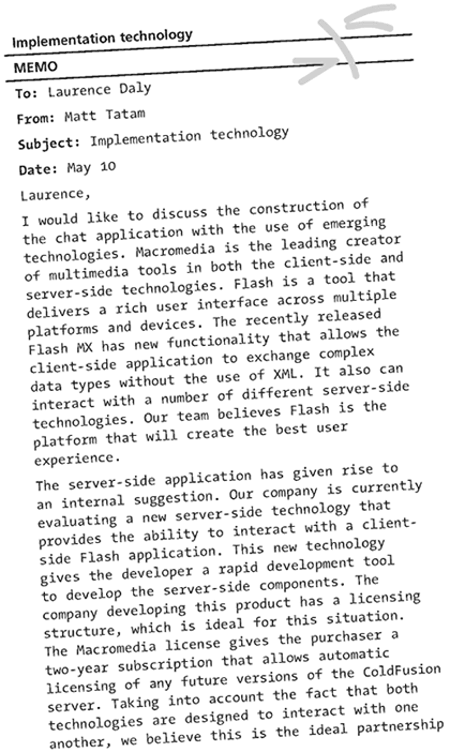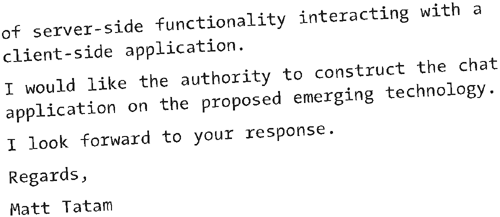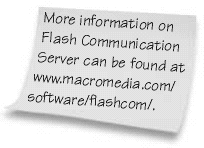Technologies Anticipated
| With the requirements approved, design can now begin. Any further requirements or modifications must now follow the change control process. With the requirements and test plan documents, the architect had enough information to determine what technology should be implemented to deliver the end product. The email discussed the use of rapid development tools that Tatam System Consultants felt would assist in delivering the application within a reasonable time.
Matt's message was clear and authoritative. Laurence responded a few days later.
ResearchDuring the course of the design phase, TSC's lead developer was instructed to develop a conceptual prototype of an individual chat session. The results of her research initially leaned toward a real-time data-transfer system. Most if not all chat products she found used some type of continuous live connection. The prototype had two alternatives. The first was to use a Flash MX user interface and a database back end to store the chat messages. This option would need a polling system in place to retrieve recently modified data through the Flash MX client request at regular intervals. The second (and preferable) option consisted of a server-side system that could manage one-to-one or one-to-many end-to-end connections that supported real-time communication. The preferred option needed to be thoroughly investigated before a recommendation could be put forward. This led the lead developer to continue her research into technologies that would deliver this functionality. While the requirements were being signed off on, an invitation to view a new product called the Flash Communication Server (FCS) arrived in her in-box. She immediately downloaded the application, documentation, and examples. Once she read the documentation, she realized that this would solve the communication challenge of the Chat project. She then proceeded to develop the prototype. She was so pleased with her rapid progress and the functionality that could be delivered that she wrote a memo and circulated it to the other team members.
After discussing the memo, TSC's analyst felt that the technology did have some features that would be attractive to implement within the chat system. Further research was done, and the prototyping was completed. The prototype successfully demonstrated the required functionality that would be beneficial in a chat application. TSC contacted the client by phone to suggest another solution (the FCS) that could be applied to the chat system. Silicon Coast's top managers were enthusiastic and said that they would support an official recommendation to Laurence Daly.
After this communication was forwarded to the system architect, he spent the next couple of days (including the weekend) developing the system design. As the technology was already determined, the design document was biased in its development toward the Macromedia suite. |
EAN: 2147483647
Pages: 114






